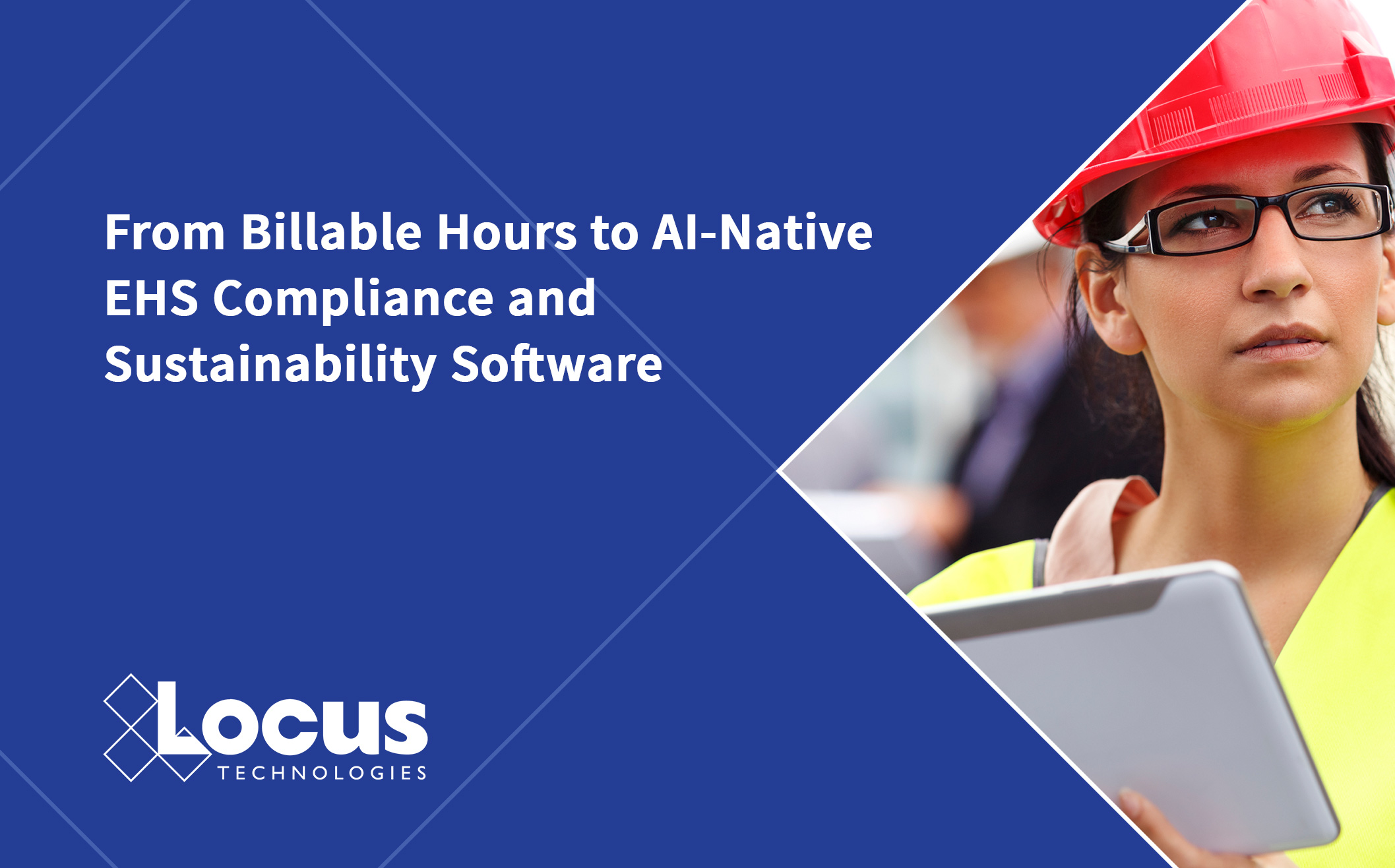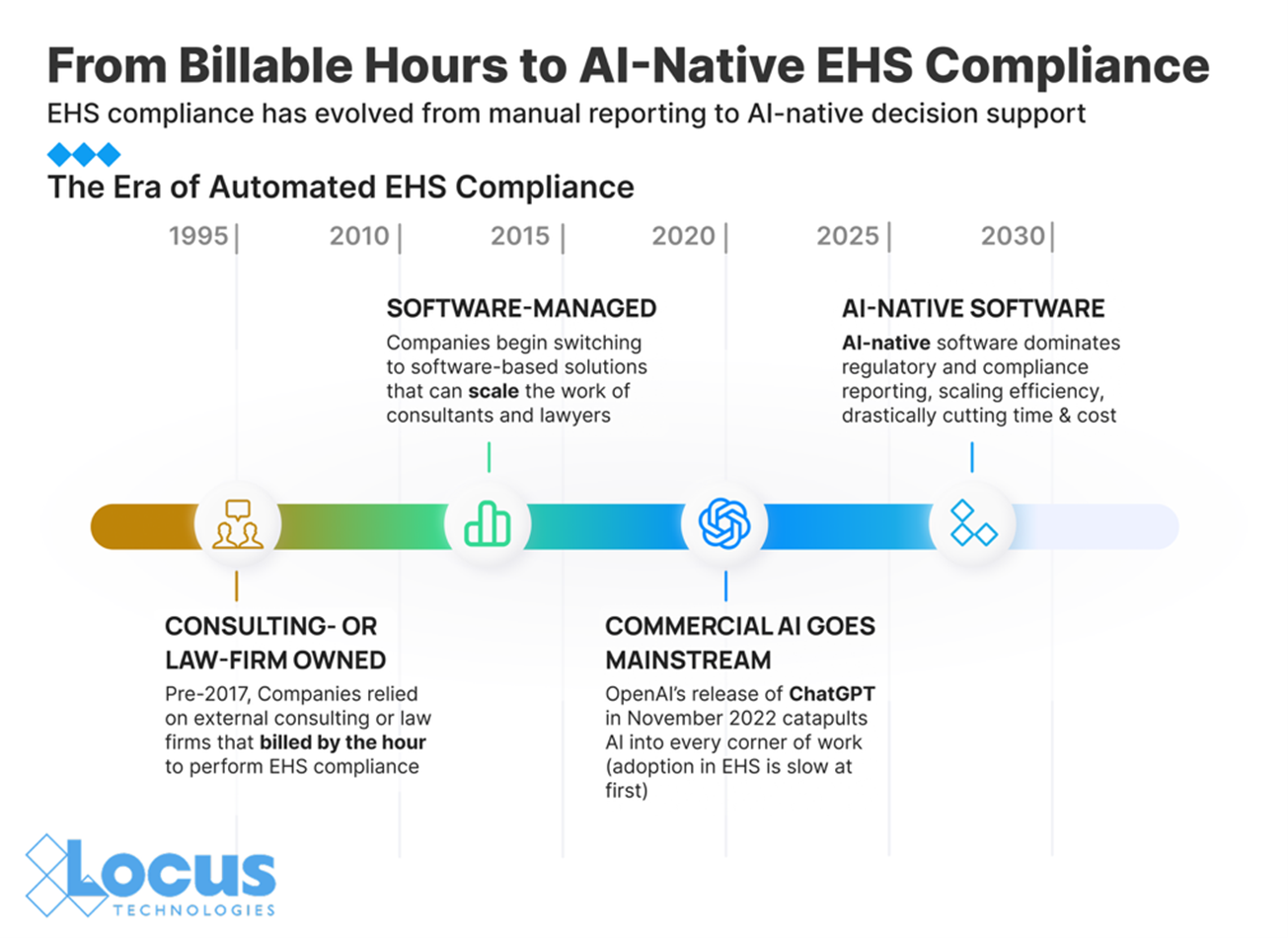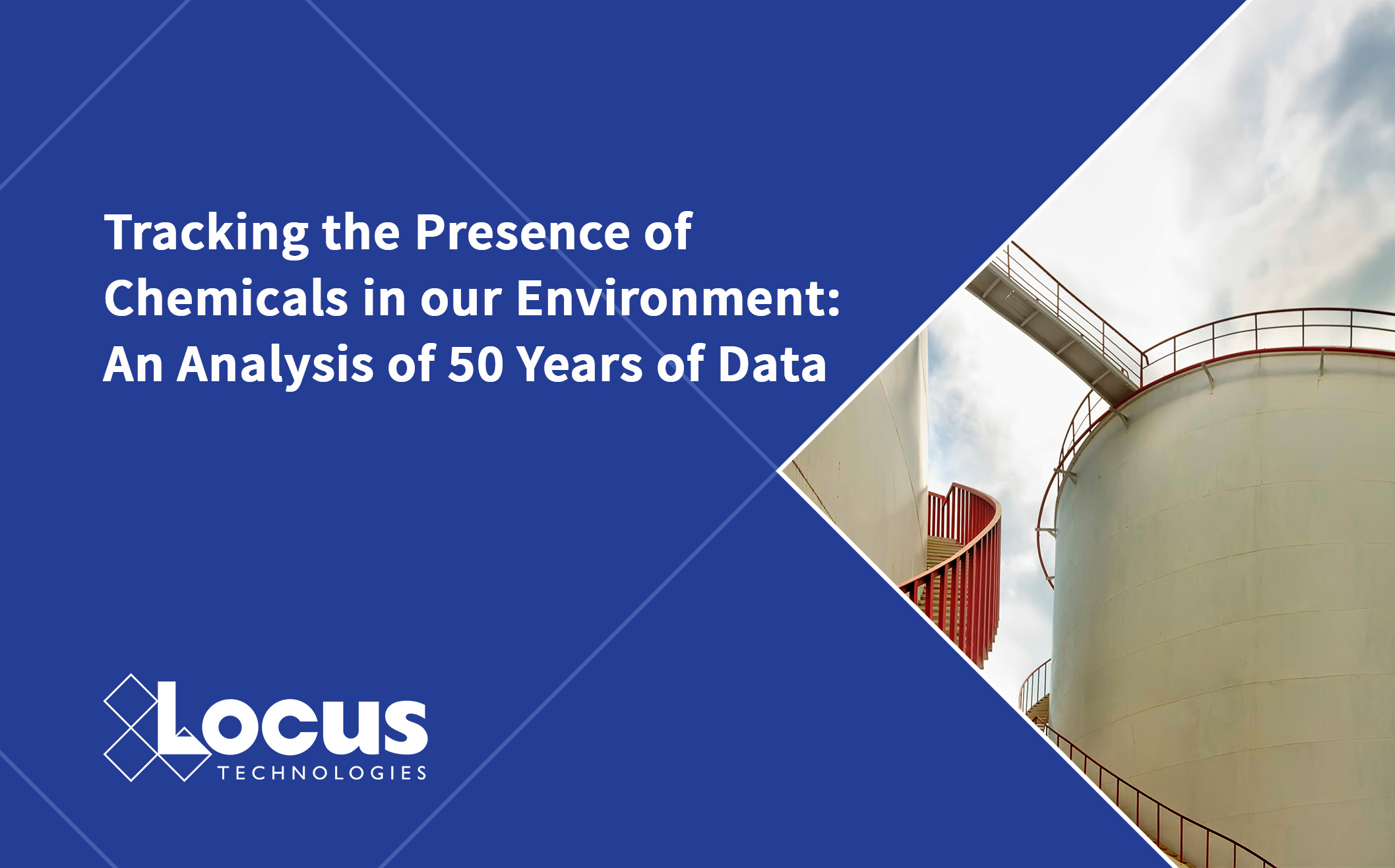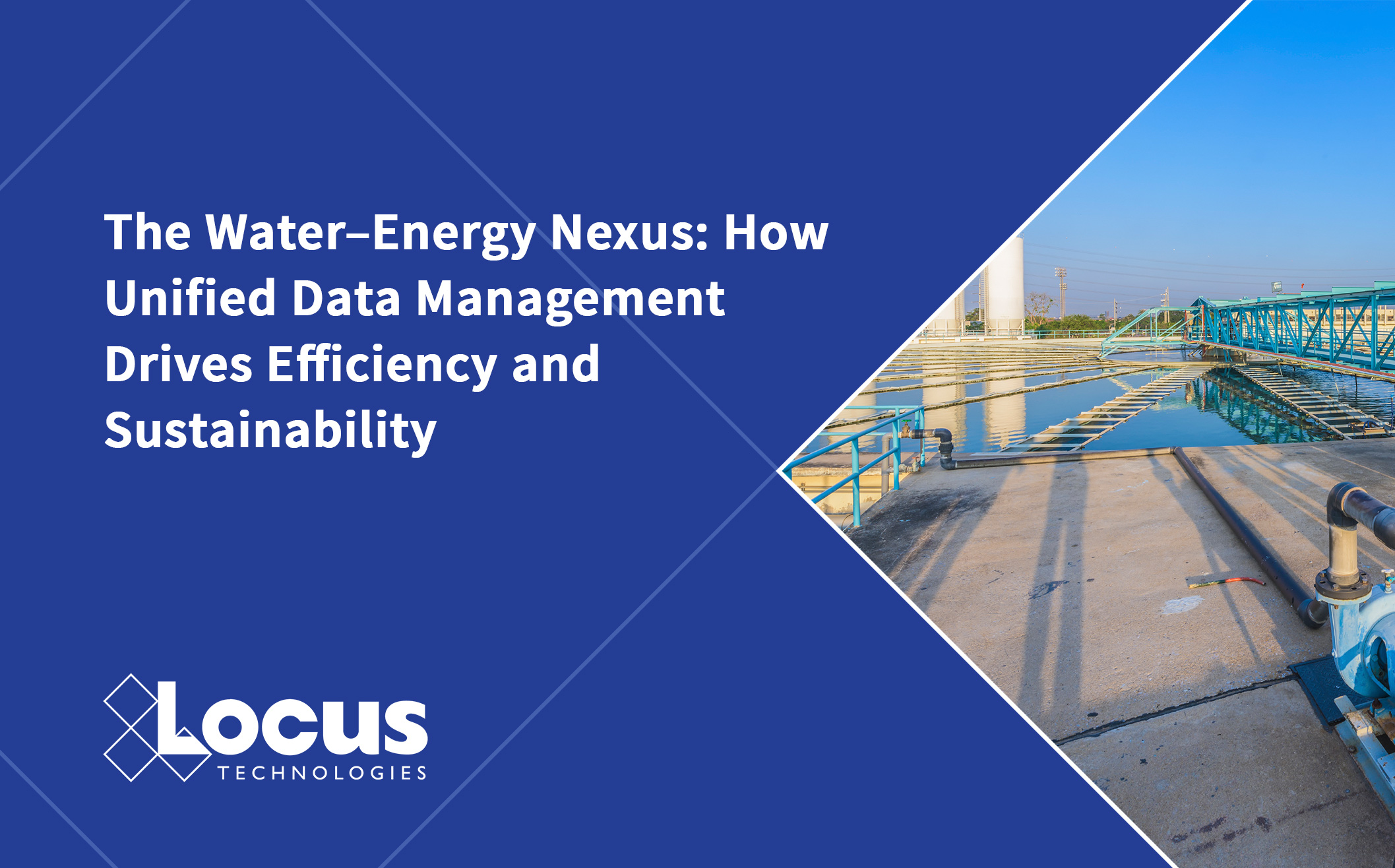From Billable Hours to AI-Native EHS Compliance and Sustainability Software
By Staff Writer

Reading Time: 2 minutes
EHS compliance and sustainability are high priorities for companies affected by the reporting requirements of an ever-growing number of regulations. To be credible in their compliance and maintain a positive public image, companies must have credible reporting. Their approach has undergone significant changes over the last five decades since the inception of the US EPA.
Today, environmental, health, and safety (EHS) compliance is no longer just a matter of ticking regulatory boxes. It’s directly linked to investor confidence, employee trust, and long-term business resilience. Companies operating across multiple countries—or even just across US state lines—must navigate a complex web of regulations governing emissions to air, water, and soil, along with waste management and climate-related disclosures.
As Taylor Swift puts it in her latest album:
“Keep it one hundred / on the land, the sea, the sky.”
It’s a fitting mantra for today’s EHS leaders. Full-spectrum compliance isn’t optional—it’s strategic. But the reality is, most internal EHS teams are stretched thin and under-resourced. Without modern, cloud-based compliance software, staying “one hundred” across every environmental vector becomes nearly impossible—and failure can be costly.
The right technology isn’t just helpful. It’s essential.

Figure 1: Overview of shifting EHS compliance space
How EHS Compliance Used to Get Done
The consultant/law firm era (1990s → 2010s)
Through the 1990s–2010s, EHS compliance reviews were typically consultant or lawyer-led projects:
- Data wrangling and numerical modeling by consultants: Multiple numerical models would be run to simulate the behavior of contaminants’ spread in water, ground, or air.
- Run under legal privilege: Many employers engaged outside counsel to direct their compliance activities and to preserve attorney-client privilege (especially in the US).
- Periodic, manual: Compliance and analyst teams compiled data once yearly (or before litigation), outside experts ran analyses, and companies produced one-off reports. Practitioner playbooks from law firms reflect this cadence.
- High touch, tedious, expensive: Multiple external experts touched the dataset from entry-level engineers all the way to executive teams who reviewed the compliance reports before submissions. This resulted in a slow, tedious, and expensive process, as high-cost billable hours for each project were passed on to the customers.
- Primitive tooling: Lawyers and consultants relied on spreadsheets and simple Word documents scattered in the nascent corporate networks. Static files, with many iterative versions, left little room for testing, iteration, or flexible scenario planning. Over time, most of the data was lost due to corporate reorganizations or mergers and acquisitions activities.
The software era (late-2010s → early-2020s)
As reporting rules and scrutiny grew, specialist software emerged to operationalize EHS compliance:
- Software calculates static EHS reports: Vendors productized numerical models and audit trails, shifting from annual projects to an as-needed analysis.
- Environmental data clean-up: Most vendors did not automate the cleaning, mapping, and joining of complex and disjointed environmental monitoring datasets.
- Some companies did this in-house: Many industrial companies hired full-time staff to deal with avalanches of monitoring data and the increasing number of compliance-related submittals, illustrating the move from episodic to programmatic compliance reporting.
- IoT technologies opened another data stream, much bigger than anything observed before. Real-time monitoring became a norm, particularly for air emissions.
Our founder, Neno Duplan, a Carnegie Mellon graduate, has a background specifically in the application of big data technologies and machine learning applied to EHS. His early work while a graduate assistant at Carnegie Mellon led to the formation of Locus Technologies in 1997. Consequently, Locus has an evolutionary advantage with machine learning, expert systems, and AI in general. At Locus, Duplan led the development of the first web-based EHS compliance algorithms, which highlighted the shortcomings of legacy B2B SaaS approaches. Today, Locus is the leading AI-native platform for EHS compliance, replacing outdated B2B SaaS models.
The AI era (2024 → now)
Today’s tools layer AI and traditional machine learning (ML) models onto enterprise data to make EHS compliance proactive and embedded:
- Decision support within operational departments: SaaS EHS platforms now suggest targeted activities that not only help automate compliance but also address operational inefficiencies, allowing for the recovery of compliance investment through operational gains and ROI. With these platforms, employees can make timely decisions to avoid costly compliance mistakes.
- API connected: EHS data teams are no longer required to manually pull raw data and submit it to the software vendors’ portal. Everything is connected and unified via the platform layer in real time.
- Compliance by design: The Clean Water Act, Clean Air Act, CSRD, and numerous other regulations have compelled software providers to generate audit-ready documentation, ensure complete transparency, automate reporting directly to regulators’ sites, and issue real-time alerts when, for instance, MCL limits within specified thresholds are exceeded.
- Adjacent AI trends: AI is increasingly used for EHS benchmarking and monitoring adjacent properties whose emissions may affect customers. Human oversight is still needed to vet the accuracy and integrity of reporting.
- Limitations: Generative AI alone is insufficient for EHS compliance modeling. Current LLMs are not designed to identify the impact of multiple overlapping emission sources on various compliance activities. Practical analysis still requires either a purpose-built algorithm to address complex and intermingling plumes. For instance, consider the intersection of two busy streets with a gas station on each corner. Any of the four stations (or all of them) may be leaking into groundwater. Who is at fault and should cover the remediation costs?
What is the future of AI-native EHS compliance tools?
The next wave of EHS compliance platforms goes beyond periodic analysis. AI-native tools are being designed to embed operational considerations directly into everyday decision-making, automate compliance, and surface insights in real-time. Platform capabilities are expanding in several key areas:
- Continuous monitoring: Real-time scanning of all emissions and emission sources.
- Decision support: Risk signals embedded in big data analysis guide EHS compliance and managers.
- Audit-ready outputs: Reports aligned to US federal and state regulations, EU, and other countries’ compliance requirements.
- Intersectional analysis: The capability to assess multiple sources in different media.
- Scenario modeling: Budget forecasting for remediation before final decisions are made.
- Forecasting long-term environmental liability management: Includes environmental liability management by aggregating liabilities from different apps on the platform.
How companies typically do it now (a practical arc)
Most large organizations follow a standard sequence when tackling EHS compliance. The process usually begins with preparing the data and ends with public reporting, with several necessary steps in between:
- Data readiness: Gather data from multiple disconnected sources.
- Data analysis: Review data, perform modeling (if necessary) and emission calculations.
- Remediation planning: Technology selection, budgeting, procurement of vendors, and subsequent documentation and regulatory oversight.
- Policy fixes: Decisions based on the company’s overall strategy.
- Continuous monitoring: Dashboards, audit logs, and explainable models.
- Public reporting and joint assessments: Codified flow in most modern platforms and guidance.
Looking ahead
EHS compliance has shifted from a yearly checkpoint to a continuous business practice. With the right AI-native tool, organizations can stay compliant, build trust, retain talent, and make smarter remediation and operational decisions every day. At Locus, we’re proving that the most advanced approach to EHS compliance can also be the most cost-effective, delivering outsized impact without legacy price tags. Locus brings three decades of evolutionary experience, which is a crucial factor in deploying an AI model. AI-native startups often lack access to data, whereas Locus offers enterprise-grade, trusted, and secure big data.
Locus is the only self-funded water, air, soil, biological, energy, and waste EHS software company that is still owned and managed by its founder. The brightest minds in environmental science, embodied carbon, CO2 emissions, refrigerants, and PFAS hang their hats at Locus, and they’ve helped us to become a market leader in EHS software. Every client-facing employee at Locus has an advanced degree in science or professional EHS experience, and they incubate new ideas every day – such as how machine learning, AI, blockchain, and the Internet of Things will up the ante for EHS software, ESG, and sustainability.



